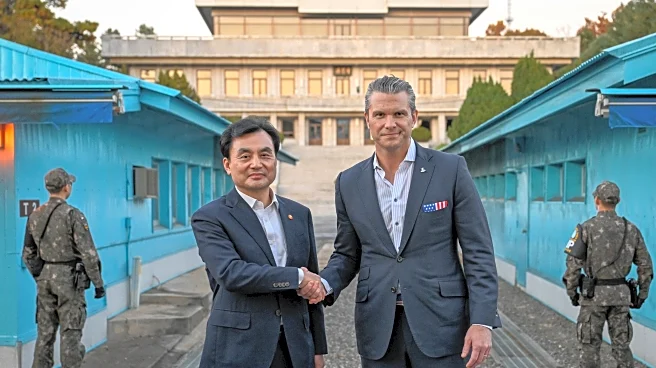What's Happening?
The United States has approved South Korea's construction of a nuclear-powered submarine, marking a significant shift in the U.S.-South Korea military alliance. This development allows South Korea to join
a select group of nations with nuclear submarine capabilities, enhancing its ability to operate independently in regional waters. The approval was announced by President Trump during his visit to Asia, where he also revealed plans for nuclear submarines to be built at the Philadelphia shipyards. This move is part of a broader economic agreement involving a $350 billion investment from South Korea into the U.S. economy. Analysts suggest that the U.S. aims for South Korea to assume more responsibility for its defense, particularly in tracking Chinese and North Korean vessels.
Why It's Important?
The approval for South Korea to build a nuclear submarine is a strategic move that could alter the balance of power in the Asia-Pacific region. It signifies a shift towards South Korea taking on a greater role in its defense, potentially reducing the U.S. military burden in the region. This development could also heighten tensions with China and North Korea, as South Korea gains the capability to monitor and counter their naval activities more effectively. The economic aspect of the agreement, with significant South Korean investment in the U.S., underscores the intertwined nature of defense and economic policies between the two nations.
What's Next?
The construction of the nuclear submarine will likely lead to increased military collaboration between the U.S. and South Korea, as well as potential adjustments in regional military strategies. The move may prompt reactions from China and North Korea, who could perceive this as a threat to their regional influence. Additionally, the U.S. and South Korea will need to navigate the complexities of operational control and integration of the new submarine into their joint defense strategies.













